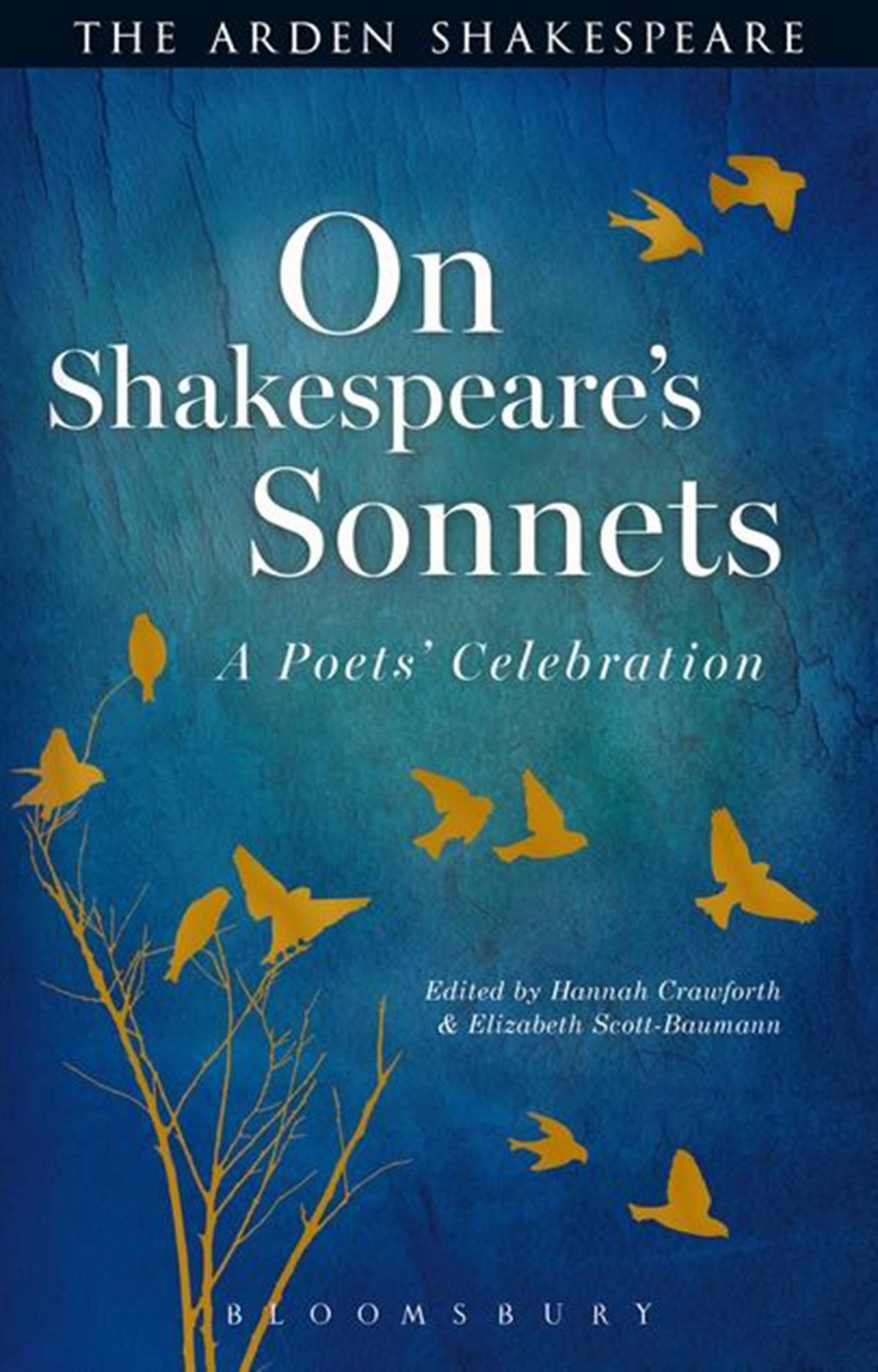Hannah Crawforth & Elizabeth Scott-Baumann, On Shakespeare’s Sonnets: 'Where there’s a Will ... there’s a range of ideas', book reviews

Shakespeare died on 23 April 1616. Except that he didn’t. He’s been alive and well for four centuries. He’s ever-present in our vocabulary, idioms, images and culture. “My verse shall stand” he asserts in Sonnet 60, and, in Sonnet 55, that “Not marble nor the gilded monuments/ Of princes shall outlive this powerful rhyme”. His confidence in the strength of his own verbal immortality, expressed in so many of the sonnets, has proved more than justified.
It is an inspired and rather successful idea therefore to commemorate the quater-centenary of the most timeless writer England and English have ever produced by inviting 30 fellows of the Royal Society of Literature to write an individual poetic response to one or more of the sonnets.
These contributors are some of the best, and best-known poets writing today and they have been given, it appears, a completely free hand – apart, presumably, from constraints of length. The result is a slimly elegant book of new poetry, some of it very fine indeed.
The free format doesn’t make for a neat structure, though. In some cases several poets have responded to the same sonnet. Others have written more than one response. Shakespeare’s originals are placed more or less where it’s appropriate but as a whole the book feels muddled in its layout – like the desk of a good poet, perhaps.
The Poet Laureate Carol Ann Duffy’s “CXVI” is one of the best contributions. She takes the central idea in Sonnet 116 “Let me not to the marriage of true minds/ Admit impediments” and writes a much looser sonnet of her own about the impending break up of a 21st-century relationship. She uses two cinquains and a quatrain and a lot of half rhyme to structure it, reminding us that, although poetry is not arithmetic there are a number of ways of adding up to 14 lines. “Our two heads on one pillow; I awake/ to hear impediments scratch in the room/ like rats …” she begins, describing a now-stale relationship in which “on the floor there lie no wedding clothes”. The sunless room is full of “dark shadows, verminous”. The poem ends “Let me admit …”. It plays on the different associations and uses of the word “admit” of course and I love the repeated image of the rats gnawing their way into the marriage.
Yet the preceding page gives us Gillian Clarke responding to Sonnet 116 in a completely different mood with a love sonnet – four quatrains and a rhyming couplet like the original – which reflects poignantly on a relationship in which two people are drawn together as are birds which mate for life. “So would I wait for you, were we put apart/ Mind, magnetism, hunger of the heart” she concludes after a series of images as examples. Not that contributing poets were required to produce sonnets. Alan Jenkins’ “Salvage” is a 27-line poem in enclosed tercets in response to Sonnet 80, “O how I faint when I of you do write”. He depicts two people from very different backgrounds meeting on a cruise ship and reflects on the strange contrast between their histories, thereby retaining a nod to Shakespeare’s nautical imagery.
Some poets, predictably, have been witty and quirky. Simon Armitage, for example, has produced what I can only describe as a binary poem entitled “Di-Di-Dah-Dah-Di-Dit” in which he responds to Sonnet 20 by wordlessly and imaginatively (no two lines are the same) exploring poetic musicality. And Roger McGough’s “What poetry my muse brings forth” hooks together 14 of Shakespeare’s first lines to create a perfectly lucid reflection on writer’s block. His epistolary apology to Shakespeare in the biographies at the back is fun too. “Dear Mr Shakespeare, (Or Will, if I may)…”
Other work which stands out in this book includes Wendy Cope’s simple but perceptive reflection on ageing based loosely on Sonnet 22, “My glass shall not persuade me that I am old”. Then there’s P J Kavanagh’s “Dream”, a 21st- century thought about the sort of exaggeration which drives Sonnet 18’s immortal “Shall I compare thee to a summer’s day?”. Kavanagh’s delightful concluding couplet runs: “Of exaggeration, never untuned a wireless/ connection with its own reach and sound – and tireless.”
If you ask a group of poets – each with a very individual voice – to create a themed book like this the style and quality is bound to vary. Personal taste and experience is a key part of appreciating poetry. There are, inevitably, poems here which I liked, and identified with, more than others.
On the other hand it really is extraordinary that these sonnets, first published in 1609, can still be engendering such a range of new ideas and ways of expressing them. Congratulations to the editors Hannah Crawforth and Elizabeth Scott-Baumann, both of King’s College, whose idea this presumably was.
Subscribe to Independent Premium to bookmark this article
Want to bookmark your favourite articles and stories to read or reference later? Start your Independent Premium subscription today.

Join our commenting forum
Join thought-provoking conversations, follow other Independent readers and see their replies